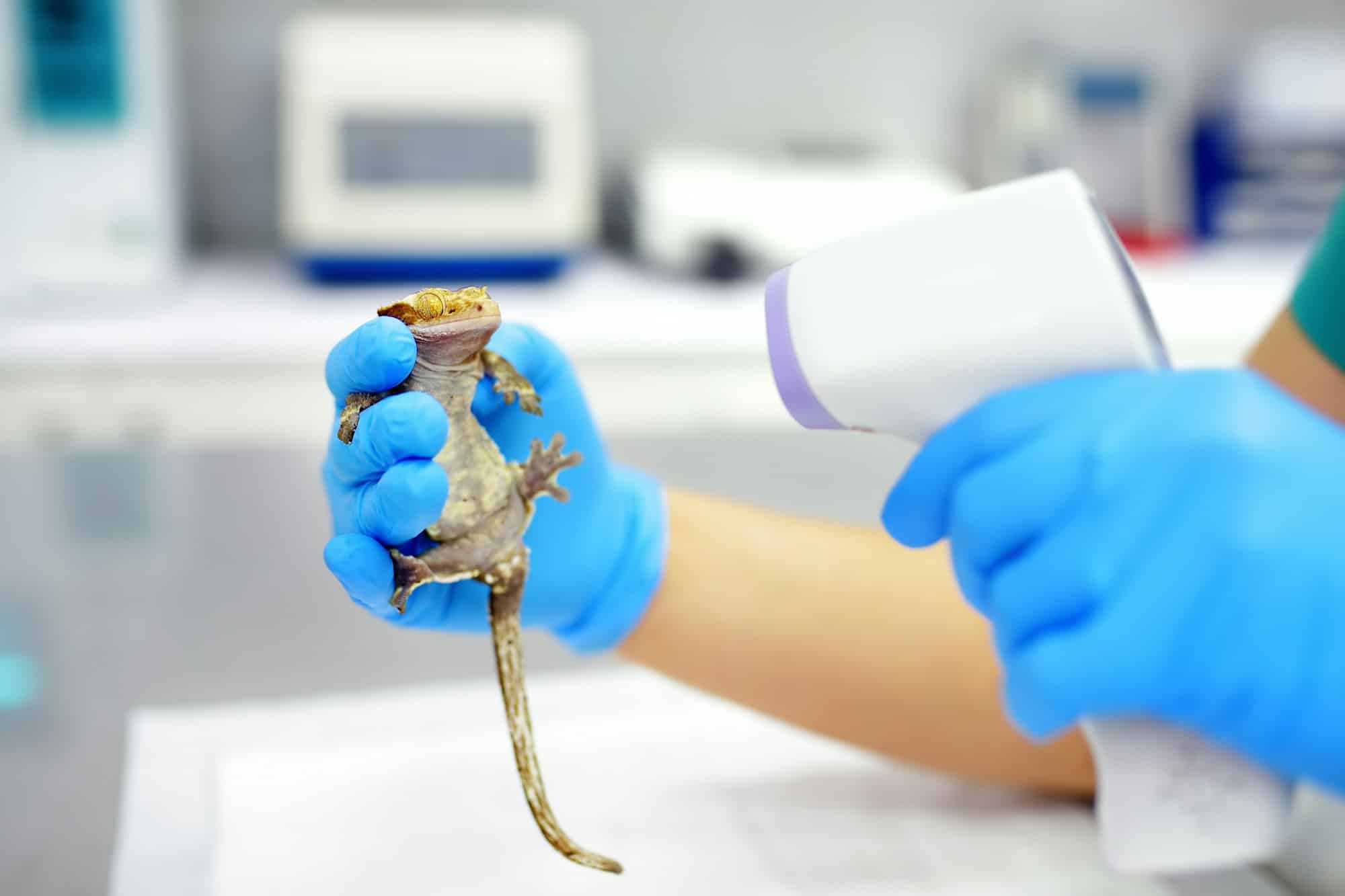As reptile enthusiasts, you understand the intrigue of these fascinating creatures. From lizards to snakes, turtles or even the majestic bearded dragon, these species offer a unique and rewarding pet experience. However, bringing a reptile into your home is not as simple as picking out a fish bowl or a dog bed; it requires careful planning and attention to detail to create an ideal habitat for your new pet. Understanding the specific needs of these animals regarding temperature, humidity, light, and enclosure design is essential. Here’s how you can set up a perfect home for your new pet reptile.
Understanding Your Reptile
Before you can start setting up the perfect habitat, it’s essential to understand the needs of your particular reptile species. Each reptile has unique requirements when it comes to diet, temperature, humidity, and habitat design. You should research thoroughly about your chosen reptile species and understand its natural habitat and behaviors. This knowledge will guide you in modeling your pet’s enclosure to mimic its natural environment as closely as possible.
A lire aussi : What’s the Best Way to Create a Dog-Friendly Yard Without Sacrificing Aesthetics?
A bearded dragon, for instance, hails from the arid regions of Australia and requires a diet high in insects and vegetables, an enclosure with plenty of space to climb, and a basking spot with sufficient heat and light. On the other hand, a ball python, native to the grasslands of West and Central Africa, prefers a humid environment and feeds primarily on small mammals.
Choosing the Right Enclosure
Once you understand your reptile’s needs, you can choose the right enclosure. The size of the enclosure will depend on the species and the size of the animal. However, it should be large enough for your pet to move around comfortably and exhibit natural behaviors.
A voir aussi : Can Parrots Be Taught to Understand and Respond to Their Names?
Tanks are a popular choice for many reptiles. Glass aquariums provide a good view of your pet and are easy to clean, while plastic cages are lightweight and retain heat well. However, remember that some species, like many snakes, feel more secure in an enclosure that is not completely transparent.
Provide hiding spots within the enclosure for your pet. Reptiles are secretive animals and love to have places where they can retreat and feel secure. These can be anything from commercially available hide boxes or caves to a piece of cork bark or a clay flowerpot.
Regulating Temperature and Light
Reptiles are ectothermic animals, which means they rely on their environment to regulate their body temperature. Therefore, setting up a thermal gradient in the enclosure is crucial. One side of the tank should be warmer – this is the basking area, while the other side should be cooler, allowing your pet to regulate its body temperature by moving between these areas.
Use thermostats and thermometers to monitor and regulate the enclosure’s temperature. Depending on the species, the basking area should typically be between 85 and 110 degrees Fahrenheit, while the cooler end should be between 70 and 85 degrees.
Lighting is also critical for your reptile’s health. Many reptiles need exposure to UVB light, which helps them synthesize vitamin D3, an essential nutrient for calcium absorption. Without it, reptiles can develop metabolic bone disease, a common but preventable ailment in captive reptiles. Provide this light through special UVB bulbs.
Maintaining Proper Humidity
Humidity is another crucial factor in your reptile’s habitat. Some reptiles, like the ball python, thrive in a humid environment, while others, like the bearded dragon, prefer a drier habitat.
Measure humidity levels with a hygrometer, and maintain the needed level by misting the enclosure with water, using a humidifier, or incorporating a moist hide box. But don’t overdo it; excess humidity can lead to respiratory infections and other health issues.
Considering Water and Food Needs
Lastly, consider your reptile’s water and food needs. Most reptiles will need a water dish in their enclosure, and depending on the species, you may need to provide live prey or fresh vegetables. Research the dietary needs of your specific pet to ensure they receive all necessary nutrients.
Remember, taking care of a reptile is a long-term commitment that requires your dedication and time. But with the right preparation and understanding, it can be a rewarding experience.
Essential Accessories and Decoration for the Reptile Habitat
After understanding your pet reptile’s needs and organizing their enclosure, you’ll need to equip it with essential accessories and decorations. This aspect is crucial as the right accessories will not only help your pet reptile feel more at home but also contribute to their mental well-being.
The core accessories every reptile home needs include a heat lamp, a UVB light bulb, a thermostat, and a water dish. The heat lamp is particularly important for cold-blooded animals like reptiles, as it helps them regulate body temperature. Apart from the lamp, the UVB light is necessary for the synthesis of vitamin D3, which aids in calcium absorption, crucial for maintaining healthy bones.
The water dish should be large enough for your reptile to soak in if they want. Ensure to keep it clean and change the water regularly as many reptiles will drink from it, and some might even defecate in it.
When it comes to decorations, aim to replicate your pet’s natural habitat. For instance, bearded dragons appreciate a climbing branch or two, as they would naturally spend time in trees and bushes. Turtles and tortoises will enjoy a nice basking spot under their heat lamp, while snakes will appreciate multiple hiding spots.
You can use a mix of real and artificial plants to bring a touch of nature to your reptile’s living space. Remember, though, that some reptiles will try to eat the plants, so ensure they are non-toxic.
Ensuring Your Reptile’s Safety and Well-being
Setting up an optimal reptile habitat is just the first step in welcoming your new pet. You must also ensure their safety and well-being. This involves regular cleaning of the enclosure, monitoring humidity levels and temperature, and providing a balanced diet.
You should clean the reptile enclosure thoroughly at least once a week. This will keep the habitat fresh and prevent the buildup of harmful bacteria. Regular checks of the temperature and humidity levels are also crucial, as fluctuations can cause stress and potentially harm your pet.
A balanced diet is essential for your pet’s health. Bearded dragons, for example, require a diet rich in insects and vegetables. Snakes, on the other hand, require a diet of small mammals. Remember, what you feed your pet is just as important as how you house them.
Remember, your duty doesn’t stop at just creating a perfect home for your pet. Regular interaction and handling, when appropriate, will also contribute to your pet’s quality of life. Research your specific reptile species to determine how much interaction they require and can tolerate.
Conclusion
Setting up a home for a new reptile pet involves more than just getting an enclosure. It requires an understanding of your pet’s natural habitat and needs. When set up correctly, the reptile habitat will provide your pet with a comfortable and safe environment that closely mimics their natural habitat. Regular monitoring and maintenance of the habitat, along with a proper diet and interaction, will ensure that your pet reptile thrives in its new home. Whether you’ve chosen a bearded dragon, a snake, or turtles and tortoises, remember that caring for a reptile is a long-term commitment that will require your time, patience, and love. However, it is a rewarding experience that allows you to observe these amazing creatures up close and form a unique bond with them.
















